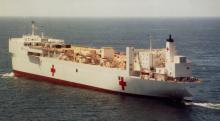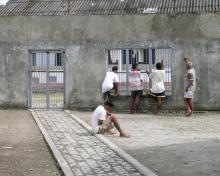Case prepared by Angèle Jeangeorge, Cristina San Juan Serrano and Eva Vaz Nave, LL.M. students at Leiden University under the supervision of Professor Robert Heinsch as well as Sofia Poulopoulou and Christine Tremblay, PhD researchers, Kalshoven-Gieskes Forum, Leiden University; with the contribution of Jemma Arman and Isabelle Gallino, LL.M. students at the Geneva Academy.
A. TOWARDS AN AGREEMENT ON THE DISAPPEARED IN COLOMBIA
“The Colombian government and leftist FARC rebels say they will work together to locate thousands of people who disappeared during more than 50 years of conflict, as the two sides take the final steps towards a peace deal.
Colombia’s chief government negotiator Humberto de la Calle said on Sunday that the agreement aims to ease “the profound pain of relatives of the disappeared” that have lived in permanent uncertainty for years.
The agreement was “another step for peace” President Juan Manual Santos, who has staked his legacy on successfully reaching a deal, said on Twitter.
According to the deal announced by representatives of the government and the Revolutionary Armed Forces of Colombia or FARC, both sides agreed to give information on people who died, whether in combat or as victims of kidnappings, forced disappearances or massacres.”
B. AGREEMENT REDUCING THE SUFFERING OF THE FAMILY OF MISSING PERSONS
In order to alleviate the suffering of the families of persons deemed as missing and in this manner contribute toward the satisfaction of their rights, the National Government and the FARC – EP have reached two kinds of agreements: in first instance, to set in motion some initial and immediate humanitarian measures for the search, location, identification and respectable delivery of the remains of persons deemed as missing within the context and due to the internal armed conflict, which will start before the signature of the Final Agreement; and in second instance, the creation of a special Unit to search for persons deemed as missing within the context and due to the armed conflict.[…]
I. Immediate trust-building measures to contribute toward the search, location, identification and respectable delivery of the remains of persons deemed as missing within the context and due to the armed conflict
[…]
Within the framework of the trust-building measures, the National Government and the FARC – EP have agreed on initial actions, immediately and with strictly humanitarian purposes, to locate, identify and respectably deliver the remains of persons deemed as missing within the context and due to the armed conflict.
For that purpose, we have agreed to ask for the support of the International Committee of the Red Cross for the design and implementation of special humanitarian plans for the search, location, identification and respectable delivery of remains to their relatives. The National Government and the FARC - EP undertake to provide the ICRC with the information they have available and to facilitate the execution of the special humanitarian plans. […]
As a first measure, the delegations of the National Government and the FARC - EP have agreed that: The National Government will accelerate, on the one hand, the identification and respectable delivery of victims’ remains and of those who have died in the course of Law Enforcement operations and buried as N.N. [graves without identification] in cemeteries located in the zones most affected by the conflict, pursuant to the recommendations made by the National Legal Medicine and Forensic Sciences Institute; and on the other hand, the respectable delivery of the identified remains which have not been delivered yet to their relatives. Whenever necessary, support will be requested from the ICRC for the respectable delivery of the remains to the relatives of the FARC – EP members.
The FARC – EP will provide information for the location and identification of the remains of victims whose location is known to them, and will contribute to the respectable delivery of same. In all cases, the respectable delivery will be carried out considering the will of the relatives, who will be provided with the required psycho-social support. […]
In order to strengthen the institutional capacity and the participation of the victims in the search, location, identification and respectable delivery of the remains of persons deemed as missing, the National Government and the FARC - EP have agreed to ask the Commission for the Search of Missing Persons to develop, within the following four months, a plan with recommendations aimed at enabling the achievement of said purpose, for which purpose it will call upon the participation of victims, specialized and human rights organizations.
II. Special unit for the search of persons deemed as disappeared within the context and due to the armed conflict
The National Government and the FARC - EP agree that, in order to elucidate what happened to the persons deemed as missing as the result of actions by State Agents, members of the FARC – EP or of any organization that has taken part in the conflict, and in this manner contribute toward the satisfaction of the victims’ right to the truth and reparation, the National Government will set in motion, within the framework of the end of the conflict and after the signature of the Final Agreement, a special, high-level unit with a transitory and exceptional nature, with strong participation of the victims, for the search of all the persons missing within the context and due to the armed conflict (hereinafter referred to as the UBPD). […]
The UBPD will have the following functions: […]
- Whenever possible, guarantee the respectable delivery to their relatives of the remains of persons deemed as missing within the context and due to the armed conflict, always considering the different ethnic and cultural traditions.
- Guarantee the participation of the relatives of the persons deemed as missing within the context and due to the armed conflict, in the processes for the search, identification, location and respectable delivery of remains.
- Provide the families with an official, detailed report of the information it may have obtained about what happened to the person deemed as missing, upon concluding the execution of the corresponding search plan. Remains that are unidentified or are not claimed by their relatives shall be preserved and will be at the disposal of the competent authorities in order to satisfy the victims’ rights.[…]
C. THE REPORTING ON THE IDENTIFICATION AND TRANSFER OF THE REMAINS TO THE FAMILIES
The Colombian authorities handed over the remains of 29 people killed in clashes with the public forces to the bereaved families on Thursday in Villavicencio. Because the bodies had not been identified or claimed at the time, they had ended up in communal graves in cemeteries in the Eastern Plains region and in the south of the country.
The solemn ceremony, led by Peace Commissioner Sergio Jaramillo, is part of the government’s policy of seeking to identify all the unidentified remains buried in the country and return them to the families. The specific focus is on FARC members who died in military operations and fighting during the conflict. This humanitarian initiative was reaffirmed during the peace talks in Havana […].
The 29 bodies were part of a large group of 2,292 presumed guerrillas who were buried in five cemeteries in the Eastern Plains. Of those, 830 have been fully identified by the public prosecutor’s office and forensic service. The first handover was made to the families who had been located by the authorities in the Eastern Plains region.
Discussion
I. Classification of the situation and applicable law
1. How would you classify the situation at the time in Colombia between the government and the FARC? Why? Is the level of organisation of the parties a relevant criterion to determine the nature of the situation? If yes, how organised are the parties? Which rules of IHL apply? (
GC I-IV, Art. 3;
P II, Art. 1)
2. If there is an armed conflict, has it ended yet? Why? When does a non-international armed conflict end? Do some IHL obligations continue to apply after the end of the conflict? Only those referred to in Art. 2(2) of P II?
II. Obligations regarding missing and dead persons
3. What are the IHL obligations of the parties to the conflict with regard to missing persons? With regard to the dead? What does “whenever circumstances permit” mean in Art. 8 P II? What were the measures taken by the Colombian government and the FARC-EP in this regard? (
P II, Art. 8;
CIHL, Rule 98,
Rules 112-117)
III. Elements contributing to respect for IHL
5. (Document B) What is the main purpose of the agreement between the FARC and the government of Colombia? (Document A) What is the aim stated by the parties? Who are the first beneficiaries of such agreement? How can the search for missing persons contribute to the peace process as a whole? Why?
6. Why did the parties to the conflict agree to be supported by the ICRC for the conclusion of this agreement? What was the role of the ICRC in this instance? What is the legal basis for the ICRC’s activities in this respect?
7. In the case at hand, both parties aim to include the relatives of missing people in the search, identification and respectable delivery of the remains of persons deemed as missing. Why do you think these aspects are especially important for this issue?
8. What factors, in your opinion, contributed to the establishment of an efficient system of search and exchange of missing persons? How helpful is the cooperation between the parties to the conflict in this sense? The cooperation between international and non-international organisations? The involvement of civil society?






